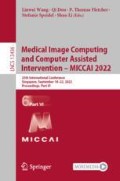Abstract
In human MRI studies, magnetic resonance fingerprinting (MRF) allows simultaneous T1 and T2 mapping in 10 s using 48-fold undersampled data. However, when “reverse translated” to preclinical research involving small laboratory animals, the undersampling capacity of the MRF method decreases to 8 fold because of the low SNR associated with high spatial resolution. In this study, we aim to develop a deep-learning based method to reliably quantify T1 and T2 in the mouse brain from highly undersampled MRF data, and to demonstrate its efficacy in tracking T1 and T2 variations induced by MR tracers. The proposed method employs U-Net as the backbone for spatially constrained T1 and T2 mapping. Several strategies to improve the robustness of mapping results are evaluated, including feature extraction with sliding window averaging, implementing physics-guided training objectives, and implementing data-consistency constraint to iteratively refine the inferred maps by a cascade of U-Nets. The quantification network is trained using mouse-brain MRF datasets acquired before and after Manganese (Mn2+) enhancement. Experimental results show that robust T1 and T2 mapping can be achieved from MRF data acquired in 30 s (4-fold further acceleration), by using a simple combination of sliding window averaging for feature extraction and U-Net for parametric quantification. Meanwhile, the T1 variations induced by Mn2+ in mouse brain are faithfully detected. Code is available at https://github.com/guyn-idealab/Mouse-MRF-DL/.
Access this chapter
Tax calculation will be finalised at checkout
Purchases are for personal use only
References
Ma, D., et al.: Magnetic resonance fingerprinting. Nature 495, 187–192 (2013)
Jiang, Y., et al.: MR fingerprinting using fast imaging with steady state precession (FISP) with spiral readout. Magn. Reson. Med. 74, 1621–1631 (2015)
Xiang, L., et al.: Deep embedding convolutional neural network for synthesizing CT image from T1-weighted MR image. Med. Image Anal. 47, 31–44 (2018)
Nie, D., et al.: 3-D fully convolutional networks for multimodal isointense infant brain image segmentation. IEEE Trans. Cybern. 49(3), 1123–1136 (2019)
Pan, Y., Liu, M., Lian, C., Zhou, T., Xia, Y., Shen, D.: Synthesizing missing PET from MRI with cycle-consistent generative adversarial networks for Alzheimer’s disease diagnosis. In: Frangi, A.F., Schnabel, J.A., Davatzikos, C., Alberola-López, C., Fichtinger, G. (eds.) Medical Image Computing and Computer Assisted Intervention – MICCAI 2018. Lecture Notes in Computer Science, vol. 11072, pp. 455–463. Springer, Cham (2018). https://doi.org/10.1007/978-3-030-00931-1_52
Zhang, J., Gu, R., Wang, G., Gu, L.: Comprehensive importance-based selective regularization for continual segmentation across multiple sites. In: de Bruijne, M., et al. (eds.) Medical Image Computing and Computer Assisted Intervention – MICCAI 2021. LNCS, vol. 12901, pp. 389–399. Springer, Cham (2021). https://doi.org/10.1007/978-3-030-87193-2_37
Song, P., et al.: HYDRA: hybrid deep magnetic resonance fingerprinting. Med. Phys. 46, 4951–4969 (2019)
Ronneberger, O., Fischer, P., Brox, T.: U-Net: convolutional networks for biomedical image segmentation. In: Navab, N., Hornegger, J., Wells, W.M., Frangi, A.F. (eds.) Medical Image Computing and Computer-Assisted Intervention — MICCAI 2015. LNCS, vol. 9351, pp. 234–241. Springer, Cham (2015). https://doi.org/10.1007/978-3-319-24574-4_28
Fang, Z., et al.: Deep learning for fast and spatially constrained tissue quantification from highly accelerated data in magnetic resonance fingerprinting. IEEE Trans. Med. Imaging 38, 2364–2374 (2019)
Chen, Y., et al.: High-resolution 3D MR Fingerprinting using parallel imaging and deep learning. Neuroimage 206, 1–28 (2020)
Balsiger, F., et al.: Spatially regularized parametric map reconstruction for fast magnetic resonance fingerprinting. Med. Image Anal. 64, 101741 (2020)
Chen, D., Davies, M.E., Golbabaee, M.: Compressive MR fingerprinting reconstruction with neural proximal gradient iterations. In: Martel, A.L., et al. (eds.) Medical Image Computing and Computer Assisted Intervention – MICCAI 2020. LNCS, vol. 12262, pp. 13–22. Springer, Cham (2020). https://doi.org/10.1007/978-3-030-59713-9_2
Gu, Y., et al.: Fast magnetic resonance fingerprinting for dynamic contrast-enhanced studies in mice. Magn. Reason. Med. 80, 2681–2690 (2018)
Anderson, C.E., et al.: Dynamic, simultaneous concentration mapping of multiple MRI contrast agents with dual contrast - magnetic resonance fingerprinting. Sci. Rep. 9, 1–11 (2019)
Shiroishi, M.S., et al.: Principles of T2∗-weighted dynamic susceptibility contrast MRI technique in brain tumor imaging. J. Magn. Reason. Imaging 41, 296–313 (2015)
Dedeurwaerdere, S., et al.: Manganese-enhanced MRI reflects seizure outcome in a model for mesial temporal lobe epilepsy. Neuroimage 68, 30–38 (2013)
Hu, H., et al.: Dysprosium-modified tobacco mosaic virus nanoparticles for ultra-high-field magnetic resonance and near-infrared fluorescence imaging of prostate cancer. ACS Nano 11, 9249–9258 (2017)
Cao, X., et al.: Robust sliding-window reconstruction for accelerating the acquisition of MR fingerprinting. Magn. Reason. Med. 78, 1579–1588 (2017)
Fessler, J.A., Sutton, B.P.: Nonuniform fast fourier transforms using min-max interpolation. IEEE Trans. Signal Process. 51, 560–574 (2003)
Hamilton, J.I.: Machine learning for rapid magnetic resonance fingerprinting tissue property quantification. Proc IEEE 108, 69–85 (2020)
Eo, T., et al.: KIKI-net: cross-domain convolutional neural networks for reconstructing undersampled magnetic resonance images. Magn. Reason. Med. 80, 2188–2201 (2018)
Malheiros, J.M., et al.: Manganese-enhanced magnetic resonance imaging detects mossy fiber sprouting in the pilocarpine model of epilepsy. Epilepsia 53, 1225–1232 (2012)
Pipe, J.G., et al.: Spiral trajectory design: a flexible numerical algorithm and base analytical equations. Magn. Reason. Med. 71, 278–285 (2014)
Wang, Z., et al.: Image quality assessment: from error visibility to structural similarity. IEEE Trans. Image Process. 13, 600–612 (2004)
Acknowledgements
This work is supported in part by National Science Foundation of China (grant number 62131015), and Science and Technology Commission of Shanghai Municipality (STCSM) (grant number 21010502600).
Author information
Authors and Affiliations
Corresponding authors
Editor information
Editors and Affiliations
Rights and permissions
Copyright information
© 2022 The Author(s), under exclusive license to Springer Nature Switzerland AG
About this paper
Cite this paper
Gu, Y. et al. (2022). Deep-Learning Based T1 and T2 Quantification from Undersampled Magnetic Resonance Fingerprinting Data to Track Tracer Kinetics in Small Laboratory Animals. In: Wang, L., Dou, Q., Fletcher, P.T., Speidel, S., Li, S. (eds) Medical Image Computing and Computer Assisted Intervention – MICCAI 2022. MICCAI 2022. Lecture Notes in Computer Science, vol 13436. Springer, Cham. https://doi.org/10.1007/978-3-031-16446-0_41
Download citation
DOI: https://doi.org/10.1007/978-3-031-16446-0_41
Published:
Publisher Name: Springer, Cham
Print ISBN: 978-3-031-16445-3
Online ISBN: 978-3-031-16446-0
eBook Packages: Computer ScienceComputer Science (R0)


